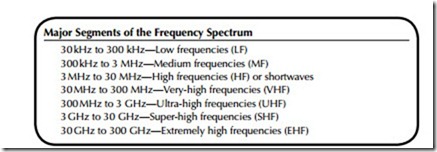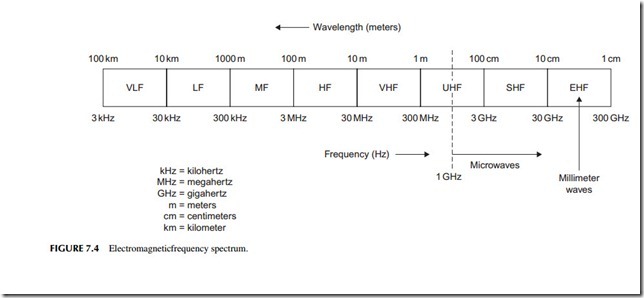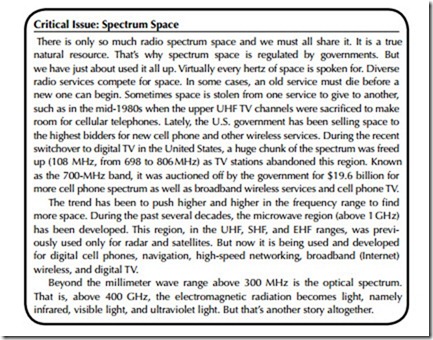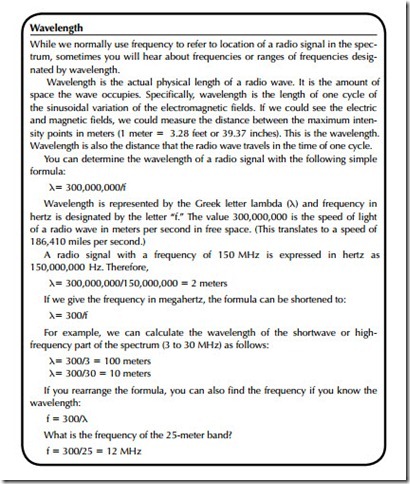ELECTROMAGNETIC FREQUENCY SPECTRUM
The radio signal applied to the antenna by the transmitter is a sine wave. Remember that all sine waves have both an amplitude and a frequency. Frequency is stated in terms of cycles per second or hertz (Hz). Radio trans- missions can take place over a very wide frequency range. We call this range the electromagnetic frequency spectrum. It extends from approximately 10 kHz to 300 MHz. Figure 7.4 shows a diagram designating the major divisions of the electromagnetic spectrum.
The electromagnetic spectrum is in free space, not only here on Earth but throughout the universe. The spectrum space may be used by anyone and, in fact, on Earth we all share it. The spectrum is divided up and used for many different radio services. It is also partitioned such that various frequency ranges are assigned to or used by different countries for their various radio services. In many cases, portions of the frequency spectrum are shared concur- rently among several countries. This allocation of the frequency spectrum is necessary to prevent radio stations from interfering with one another.
In the United States, the frequency spectrum is regulated by the Federal Communications Commission (FCC). Congress established the Communications Act of 1934, which has subsequently been amended to permit the FCC to reg- ulate all forms of radio and wired (telephone, cable TV, etc.) communications services. The National Telecommunications Information Administration (NTIA) manages the spectrum for the government and the military. Throughout the world, the frequency spectrum is allocated and managed by a worldwide organization known as the International Telecommunications Union (ITU).
The various areas of the frequency spectrum are assigned to different types of communications services. For example, in the low-frequency (LF) range, most communications services are navigational systems used by the Coast Guard and military. The AM broadcast band (530 kHz to 1710 kHz) is in the
medium-frequency (MF) range. Shortwave (SW) radio broadcasts, CB radio, amateur radio, and a variety of other communications services are in the 3 to 30 MHz or high-frequency (HF) range.
One of the most widely used areas of the spectrum is the VHF range from 30 to 300 MHz.Virtually all two-way radio communications for marine, aircraft, mobile, and other services are in this range. FM broadcasting (88 to 108 MHz) and TV channels 2 through 7 are also in this region.
The UHF frequency range, from 300 MHz to 3000 MHz (3 GHz), also contains a wide variety of communications services. It includes two-way mobile radio, TV, and cellular telephone.
Frequencies above 1 GHz are designated as microwaves. In the microwave region between 1 and 3 GHz are satellite and navigational systems. For example, the widely used global positioning system (GPS) operates in this range. This area is also occupied by the newer cellular telephone service and wireless networks such as Wi-Fi and Bluetooth.



